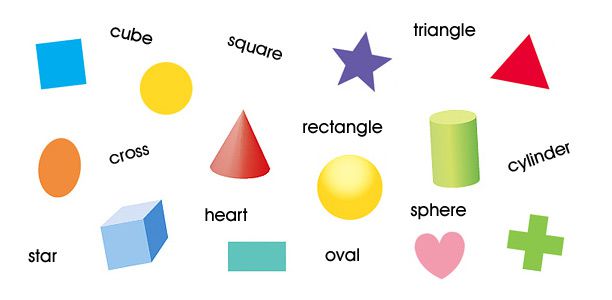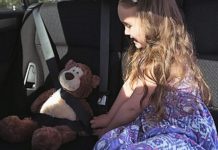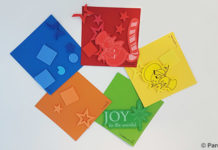Age
3-12 years
Duration of activity
This quick activity can fill in a few spare minutes, or you can use the shapes flash cards in conjunction with other activities like the Shapes activity sheets.
Materials/equipment
- Shapes activity flashcards and labels. Be aware that for some of the activities listed here you will need multiple copies of the shapes (but not the words).
- Materials for laminating (optional).
Cost
The cost to prepare this activity should be minimal, particularly if you have a printer and laminator you can use at home or work. If you need to have the printing and laminating done at the shop, expect to pay around $4-$5 for everything.
Preparation
- Print the Shapes flashcards and labels
- Laminate each page (optional – lasts longer this way).
- Cut out the boxes containing the pictures and words for each shape.
What to do
Activity 1: Grouping and identifying all the matching shapes
- You will need at least three copies of each of the picture flash cards to play this game.
- Look at the flashcards with your child and get them to point to and name each of the different shapes.
- Take all the picture flashcards and place them on the floor or another surface upon which your child can see them all easily.
- Instruct your child to identify all the shapes which are exactly the same and place them together. Or, for younger children, choose a single shape to start with and ask them to identify all the shapes that are the same, and then choose the next shape and repeat.
- When your child has grouped all the shapes correctly congratulate them.
- If your child gets stuck or makes a mistake, talk to them about the features of the shapes which will help them to group them correctly, for example you could talk about the number of sides, or the size of the angles.
Activity 2: Grouping and identifying all the shapes with similar features (e.g. straight and curved sides (straight sides, four sides)
- Take one or more copies of each shape picture flashcard and place them on the floor or another surface where your child can see and pick them up easily.
- Look at the shapes with your child and get them to point out and say the names of the different shapes.
- Instruct your child to place all the shapes into groups, depending on whether they have straight sides only, curved sides only, or a combination of curved and straight sides.
- If they get stuck, congratulate them for the shapes they have grouped correctly and help them out by talking about and pointing to the sides and asking if they are straight or curved.
Activity 3: Matching shape pictures and names
- You will need one copy of each shapes’ picture and word flashcard to play this game.
- Place all the flashcards of the floor or another surface where your child can see and move them easily.
- Point to the shapes and get your child to name them and then point to some of the words and get your child to read them. If your child is not yet able to read alone, help them by pointing at the letters as you sound out the word.
- Instruct your child to find the name that corresponds to each of the pictures and place it below the picture card.
- Congratulate them when they match a name and picture correctly and help them out if they get stuck, by sounding out the words and talking about the feature of the shape it corresponds to.
- Alternatively you could place the pictures and words in separate rows and give your child pieces of string to join them with.
Activity 4: Memory game
- You will need two copies of each picture flash card, or one copy of each corresponding picture and word flashcard to play this game.
- You can play this activity with one or more children.
- Place all the cards face down on the floor or another surface where your child can easily reach them to pick them up.
- Tell your child that they need to try and find matching shape pairs by turning over two cards at a time.
- Instruct your child to turn over two cards to see if they match.
- Talk about the pictures on the cards and whether or not they are the same.
- If the shapes are different, instruct your child to turn them back over, but to remember whereabouts they are so that they can turn them over again when they find the matching picture.
- If the shapes are the same, tell your child to place them together and to the side and try again to find another pair of shapes.
- Continue turning the cards over until your child has found all the matching pairs. Talk about the features of each of the shapes they turn over. If you are playing with more than one child, they should take turns to look for matching pairs.
Tips
- Select shapes from the flashcards that are appropriate for your child’s age and ability. Toddlers and pre-schoolers who are just learning numbers will probably find this activity challenging enough if you just include the basic shapes (square, triangle, circle, rectangle). Older children will need more difficult shapes included or the game won’t be challenging enough to hold their interest.
- These flashcards are also a great educational resources to use when playing other shape games, for example the shapes activity sheets, with your child.
Extension activities
- Use the picture and word flashcards to label objects in the house which are the same shape.
- For older children have a ruler and a protractor handy so that they can practice measuring the length of the shape’s sides and its angles as you go.
Educational outcomes
Mathematical skills
This game will help your child learn or master mathematical concepts related to shapes, including:
Recognise shapes, know their names and features. Younger children will just be learning the shape names, whereas older children will be able to develop their understanding of prefixes (e.g. tri in triangle) and suffixes (e.g. –agon in pentagon, decagon, etc) which give order to the naming of shapes and help them identify the features (e.g. quad indicates a four-sided shape).
Mathematical vocabulary used to describe shapes. Younger children will learn and practice using basic terms to describe and compare shapes (e.g. big/small, straight/curved sides) while older children will develop more complex vocabulary (e.g obtuse and acute angles).
Fine motor skills
Although it’s easy for adults, picking up the flashcards off a flat surface can be quite a challenge for little fingers which are still developing there fine muscles. This is a great activity to encourage your toddler or preschooler to use their finger muscles and as they do so they’ll be developing their fine motor skills, which will also provide a foundation for writing and other tasks requiring fin movement of the fingers.
Communication and social skills
Children’s social and communication skills develop every time they interact with other people, including when they interact with you while playing this game. As you converse with them and help them with the games, they be learning how to communicate. Toddlers and pre-schoolers will learn the basics of conversation, things like listening, taking turns and answering when someone asks a question. Older children will learn more advanced skills such as how to communication feelings and facts differently, and how to communicate using body language that matches their speech.
Problem solving and persistence
Working out how to match shapes can be quite a challenge for young minds and to complete this activity they’ll need to use their problem solving skills. For younger children that might mean counting the number of sides to determine which shape it is, while for older children it may involve examining the size of the angles to work out what type of shape it is (e.g. a right angle or equilateral triangle). Solving problems like this will help them develop the skills they need to persist when they face challenges and solve academic and real-life problems in the future.
Flashcard download
The shape flashcards are available in several formats so you can choose which best suits your child. For a younger child you may want to choose the flashcards which have both the shape and name on the same card. For older children, you may wish to challenge them by asking them to match the correct name with the shape themselves and print the blank shapes, so they can colour them themselves. This activity is also available in multiple languages. (Would you like to add your language to our collection? Contact us
Shapes and names together
2D shapes and names:
3D shapes and names:
Triangle shapes and names:
Shapes only:
- 2D shapes coloured
- 2D shapes blank (colour yourself)
- 3D shapes coloured
- 3D shapes blank (colour yourself)
- Triangles coloured
- Triangles blank (colour yourself)
Names only
2D shape Names:
3D shape Names:
Triangle Names:
References
- Virginia Early Childhood Development Alignment Program. Milestones of child development- A guide to young children’s learning and development from birth to kindergarten. 2009. (cited 26 July 2013). Available from URL Link.
- Australian Curriculum and Reporting Authority. Australian Curriculum- Mathematics. Undated. (cited 2 October 2013) Available from URL Link.
- Australian Curriculum and Reporting Authority. Australian Curriculum- English. Undated. (cited 2 October 2013) Available from URL Link.



 (15 votes, average: 4.73 out of 5)
(15 votes, average: 4.73 out of 5) 






